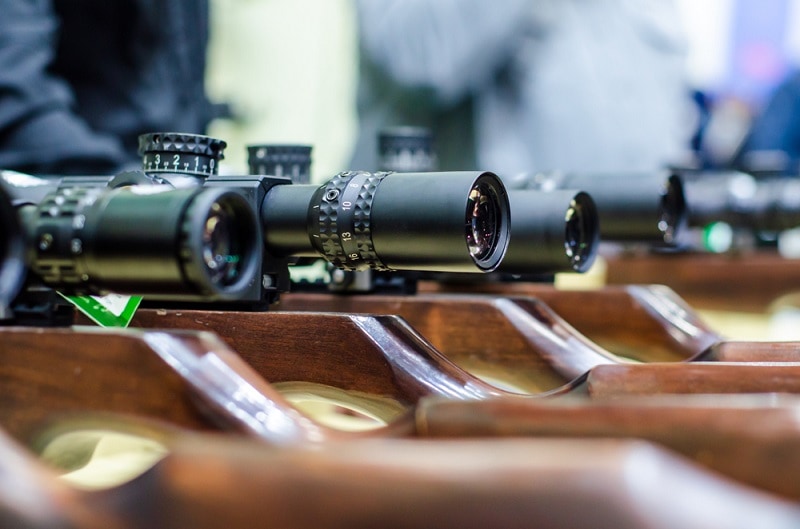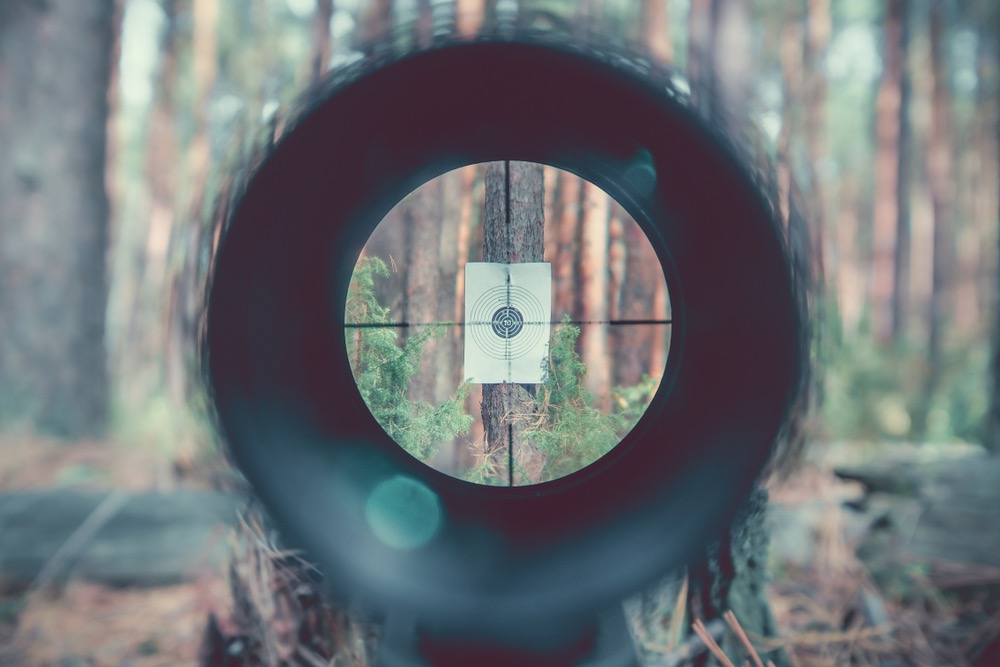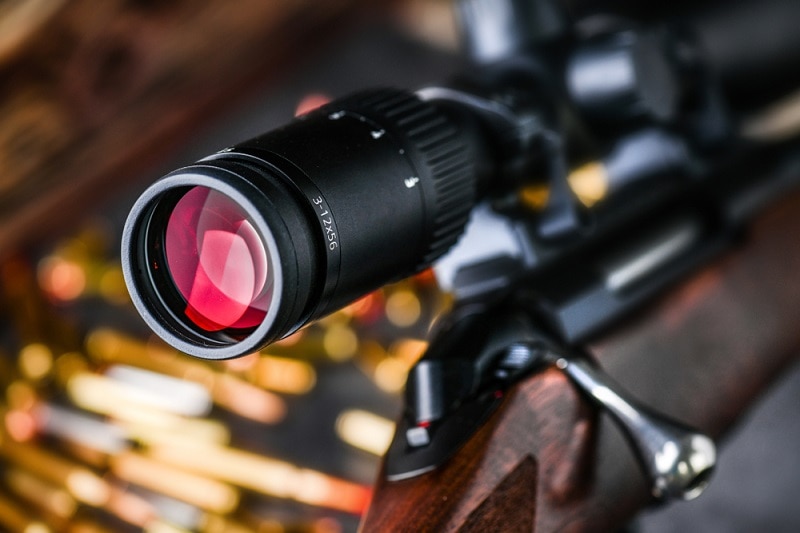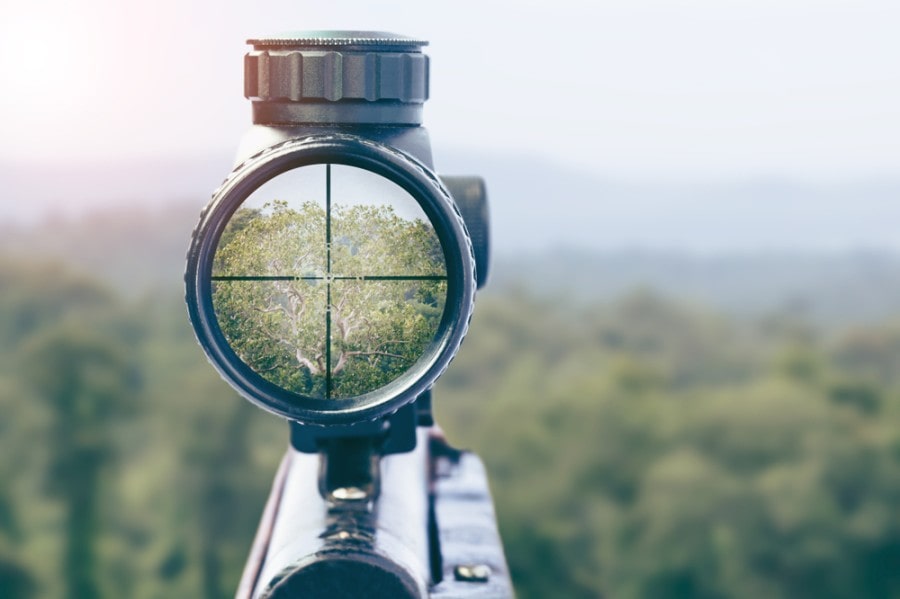What Do the Numbers On A Rifle Scope Mean?
Last Updated on

You know, in the years that we’ve been active in this industry, we’ve learned so many things. One of those things is, never assume somebody knows something just because that something seems obvious to you.
Take the numbers on a rifle scope, for example. We know what those numbers mean, but assuming that everybody else does, it’s just wrong. And because this is a supportive community, we’ll be sharing what we know with the rest of the class.
So, let’s start with the first number, which is…

Magnification
When shopping for a good scope, most rifle owners often have one thing in mind—its magnification. Which is okay, seeing as it’s ‘The Factor’ to take into consideration. However, it’s also important to take into account all the other factors that do define a good scope.
On every scope, you’ll find a series of numbers. The most common number in that series will always be the magnification level. Magnification, also known as the power of a rifle scope, is essentially a measurement or a ratio. A ratio between the original object size, and the size of the image created by the scope.
To best understand this concept, we feel it’s important to throw in a hypothetical:
So, think of a size of a target that’s 300 yards away. Let’s assume you have a 20/20 vision, so you’re trying to view that target with your naked eyes, without prescription glasses. Now, from that distance, you can tell the target appears to be 30cm long.
Supposing you decide to use a rifle scope that has a magnification range of 4-8, that same target will appear 4 to 8 times larger, contingent on where the user decides to set the zoom. Long story short, the image will either be 120cm or 240cm long.

Types of Scopes
You also need to understand that we have different types of rifle scopes. There’s the variable magnification scope and the fixed scope. The variable scope is at times referred to as an adjustable scope, while the fixed scope is the non-adjustable optic.
From that description alone, you can tell a fixed scope a number as the magnification representation. For a variable scope, you’ll find two numbers listed as a range. That is to say, you’ll always find a dash between the two representing numbers.
The above hypothetical situation is a fine example of a variable scope. The first number always represents the lowest power, while the second number represents the highest.
On a fixed scope, you’ll find the number inscribed in this pattern: 5x50mm. The ‘5x’ in that series is the power representation. Meaning, your target will appear 5 times closer, or larger, than the naked eye.
Variable scopes are a tad bit more popular compared to their fixed brethren because they offer versatility. You’ll clearly have different options to work with.
Deciding which magnification scope is appropriate at any given time will depend on the target’s distance and environment. Assuming you’re hunting in a place that has a close cover, or maybe in a thick forest, the ideal rifle scope should be a low-power fixed scope. But if you’re in a situation where you can only access variable scopes, pick one that has been designed to offer a power of 3.5x or lower.
Why is a low magnification scope more appropriate in that environment? The thing is, a scope’s magnification power influences the field of view provided. Using a higher power will decrease your overall field of view, thereby making it difficult to swiftly acquire a target or switch to one.

A variable scope’s highest power, or a high-powered fixed scope, will better serve you in long-range surroundings or areas that are defined by mountains. Getting a clear, crispy image of a tiny target that’s hundreds of yards away will feel like a breeze, if you’re using a power of 20x or higher.
Most hunters invest in adjustable scopes designed with a wider power range because they want to have more options. Those variations in between the low and high magnification setting are really important to them.
The Size of the Objective Lens
While talking about the magnification of a fixed scope, we listed this pattern, 5x50mm. We intentionally didn’t want to talk about the ‘50mm’ in that series, because we knew we would touch it here.
It represents the objective lens size of that scope, and as you can see, it’s also a measurement. So if you ever walk into a store and the first rifle scope that grabs your attention has a number series like 4-8×50 written on it, this is all you need to know:
First off, it’s a variable scope. And you can tell that by looking at the dash separating the first two numbers. That dash signifies range. Secondly, the images can be enlarged 4 times, all the way up to 8 times. And lastly, it comes with an objective lens that’s 50mm big.
Your next question will probably be, “A scope has more than one lens. So, which one is the objective lens?” and the answer is simple;
Just look for the one that’s located farthest from the stock of your rifle, and closest to the target. That will be your rifle scope’s objective lens.
Friendly Reminder: Given an option, please choose a larger lens. We know all too well large doesn’t always translate to efficiency, but in this industry, it actually does. A larger lens will funnel through sufficient light, especially in low light conditions, and hence illuminate the target.

Also, it wouldn’t be wise to go for a high-powered magnification scope that has a small objective diameter because it won’t be able to maintain image clarity and brightness—The two things that usually make the entire hunting or shooting experience worth the while.
Take a 4-8x50mm scope and a 4-8x32mm scope, for instance. On an 8 times magnification, the images created by the former will be clearer than those created by the latter. The 32mm objective lens won’t be able to allow enough light to pass through, even if you’re hunting during daytime. And as a result, the more you’ll magnify your target the darker the images will get.
Let’s wind up this section by looking at the pros and cons of different sizes of objective lenses.
50mm or higher
- Effective under low light conditions
- Reduces eye strain
- Performance won’t be affected even if the light diminishes
- Efficient for long range shooting
- Top-notch image quality
- Needs stronger mounting rings
- Easy to collect dirt
- Ridiculously heavy
- Offsets the balance of the entire rifle
30-44mm objective lens
- It’s lightweight
- Allows a comfortable weld method
- Easy to mount
- Funnels sufficient light
- Compared to the 50mm lens, it’s not as effective in low light conditions
28mm or smaller
- Affordable compared to scopes with larger lenses
- Easier to use in a tactical situation
- Efficient with a low magnification
- Lightweight
- Can only be used with close range shooting
- Not ideal for a rifle that has a massive recoil
- Won’t be useful with a high magnification rifle scope
What Are the Additional Figures?
The two numbers that we’ve talked about are the main figures that you’ll find on any rifle scope. However, some brands like to mix things up. We don’t know if it’s a marketing strategy or something, but you’ll sometimes find additional numbers inscribed on their scopes besides those two. The first one is the…
Field of View

We’ve already talked about how the Field of View and magnification correlate, so we know you have an inkling of an idea of what to expect from this department.
But just to make sure you remember what the FOV is, here’s an example:
You might come across a rifle scope with the numbers 100-142 feet at 1,000 yards inscribed on it. That means at maximum magnification, your Field of View will reduce to a point where you’ll only be able to see 100th of what you’re used to seeing through your naked eye. In other words, hitting the mark of any moving target will feel like a daunting task, since you won’t be able to keep on your eyes on it.
Eye Relief
The distance between the user’s eyes and the rifle scope’s eyepiece is also an important factor in this line of work. Picking a scope that has a short eye relief would be a mistake, because then you’ll have to make sure the rifle doesn’t come with too much recoil. And if it does, you’ll be nursing injuries right after. An exaggerated eye relief is also an issue because you’ll definitely lose the target’s Field of Vision.
Parallax
Parallax is an occurrence that you’ll experience if the image trying to pass through the scope’s first lens isn’t projected in the right way by the time it gets to the rear lens. And because of that, you’ll be facing accuracy issues.
How do you know you’re dealing with parallax? Just look at your crosshairs. If they keep moving around the target, that’s your answer. Most scopes have a feature that will help you make adjustments until a point where they move as little as possible.
A scope that says 10-15 yards, is trying to tell you that you could make parallax adjustments down to those numbers.
Exit pupil
The diameter of the circle of light that will be going through the user’s eye is what we’re referring to as the exit pupil. If that diameter is small, your eye won’t be filled with sufficient light. And insufficient light means dimmer images. The average size of the human iris is about 5mm in low light and 3mm during the day. so if you’re trying to figure out what exit pupil number you should go for, work around those numbers.

•You might also like:What is Photo Aspect Ratio? Photography Basics Explained

Conclusion
Now that we’ve learned what all these numbers mean, it’s time to get out there and start shopping for the right scope. Just remember to factor in weight as well. You don’t want to invest in something that might create an imbalance in your rifle. Okay, good luck!
Check out some of our other top-trending posts:
- Red Dot vs Magnified Scope for AR15: What’s Best?
- How to Measure Scope Ring Height
- 8 Best 22LR Scope for Target Shooting in 2021 — Reviews & Top Picks
- 7 Best Scopes For 17 HMR Rifles in 2021 – Reviews & Top Picks
Featured Image By Lutsenko_Oleksandr, Shutterstock
About the Author Robert Sparks
Robert’s obsession with all things optical started early in life, when his optician father would bring home prototypes for Robert to play with. Nowadays, Robert is dedicated to helping others find the right optics for their needs. His hobbies include astronomy, astrophysics, and model building. Originally from Newark, NJ, he resides in Santa Fe, New Mexico, where the nighttime skies are filled with glittering stars.
Related Articles:
Binocular Magnification Chart: Numbers & Distances Compared
How to Clean a Refractor Telescope: Step-by-Step Guide
How to Clean a Telescope Eyepiece: Step-by-Step Guide
What Is the Best Binocular Magnification for Hunting? Optical Features Explained
How to Clean a Rifle Scope: 8 Expert Tips
Monocular vs Telescope: Differences Explained (With Pictures)
What Is a Monocular Used For? 8 Common Functions
How to Clean a Telescope Mirror: 8 Expert Tips
